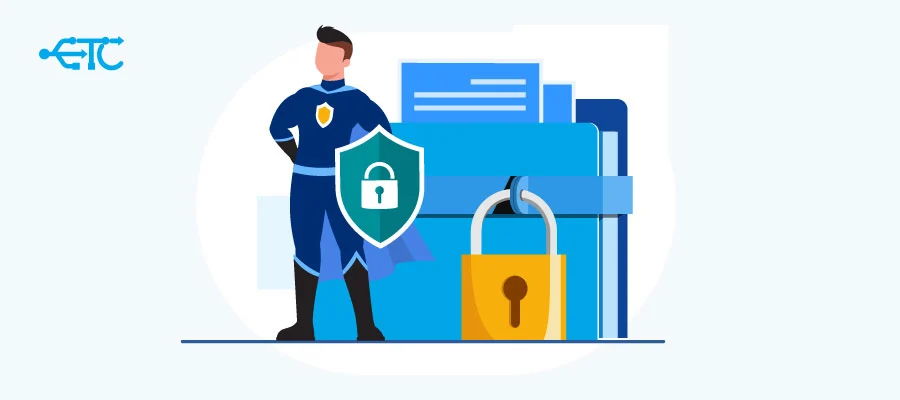Cyber resilience and cybersecurity:
What is the difference?

Experts on the subject will say that cybersecurity consists of protection against computer hackers who connect to a company’s network or attempt hacked access to its information system and data. Regarding cyber-resilience, experts define it as the reaction of a company following a cyber-attack and how it will recover. At this stage, cyber-security And cyber Resilience are presented as two separate operations. However, in reality, things are much more complex than they seem. Indeed, cyber-security can be appreciated as being the first phase of cyber resilience, in the sense that any company must integrate into its cyber-resilience strategy a cyber security stage.
What is cybersecurity ?
The concept of cyber-security is based on a range of different processes, devices, technologies, human operations and modes of governance which are implemented in order to ensure the protection of computer networks,digital assets as well as the digital systems of a company.
As such, cybersecurity measures are implemented to prevent access by hackers to the network and computer systems of a company. These measures are part of a so-called proactive action plan and which may include the following elements:
- Installation of antivirus and firewalls in addition to updates of all software.
- Meeting all compliance standards to ensure the protection of user sensitive data.
- Ensuring the security of services and devices against multiple malicious activities such as theft or viruses.
- Locking all computer screens.
- Promoting awareness and providing training to employees regarding the obligation to ensure the security of their daily tasks.
- Protective installation supported around company premises.
➔ Through the whole of this cybersecurity package, an organization is guaranteed to have a very good position which would allow it to act as a barrier against pirates and prevent them from attempting to infiltrate its computer systems.
What is cyber resilience?
Faced with the proliferation of cyber-attacks, not all security measures are completely infallible. This is where cyber resilience plays a key role by implementing improved preventive measures so as to minimize, to the best of its ability, the negative impact of cyber-attacks. These include in particular:
- Making sure there are offline backup features.
- Intervening at the level of staff skills improving them in the sense of prevention against internal problems.
- Considering recovery plans following public relations issues caused by the impact of a cyber attack suffered by a third party.
- Performing on a regular basis exercises of attack simulation to improve business readiness in the event of a cyber attack.
- Establishing a business continuity plan.
➔ Cyber-resilience is an essential and indispensable concept for any organization because it allows it to ensure optimal protection against possible vulnerabilities in the future as well as to limit as much as possible damage and losses caused by cyber attacks. Added to this is the possibility of producing an exhaustive report dealing with the post-attack phase which allows a better grasping and understanding of the impact of a cyber-attack.
What is the difference between cybersecurity and cyber resilience ?
While cybersecurity focuses on proactive dispositions with the aim of helping and supporting the company in its fight against the growing proliferation of cyberattacks such as ransomware and malicious software and applications, cyber-resilience, for its part, refers to the capacity that a company can have to limit as much as possible damage and losses while resuming business as usual following a cyber-attack. Moreover, what distinguishes cyber-security from cyber resilience is that the first focuses its action on limiting threats from the outside, whereascyber-resilience intervenes on external threats such as ransomwares as well as on threats from within that comes in the form of human error.
Which arrangements should be decided to apply for both cybersecurity and cyber resilience ?
In order to be able to seamlessly integrate two concepts at once, namely, cyber-security and cyber resilience, it is possible to apply some good practices:
- Performing simulation tests: this practice is relevant within the framework of prevention and above all good preparation to deal with a possible real cyber attack. It allows the company to anticipate the actions to be taken in the event of an attack through simulations of security incidents and makes it possible also to improve the company’s cyber-security and cyber-resilience strategy.
- Performing regular data backups: Following a cyber-attack, a company necessarily needs to restore its normal activity and resume business as usual in a short time. In order to be able to achieve this, it is essential that it backs up its data on a regular and permanent basis. Of course, in order for these backups to be reliable, it is important to do them on a separate network in order to protect them from the hands of pirates. If the data were stolen or lost, it would be much easier for the company to recover them and therefore to undertake its cyber-resilience more efficiently and more quickly.
- Emphasizing cyber-security and cyber-resilience in discussion with its board of directors: the proper preparation of all staff within a company in the event of a cyber-attack is a crucial step that needs to be taken. Employees must be on the lookout for all means allowing the protection of the company’s data against potential cyber-attacks. It is important to know that all staff are concerned, including the board of directors which is most often in some kind of break with the technical and technological aspects. It is necessary to ensure that all employees have understood in-depth the security measures and that they know how to implement them in the event of a cyber-attack. Both concepts, whether cyber-security or cyber-resilience pursue the same objective, namely: the protection of a company’s data against possible malicious cyber attacks.
